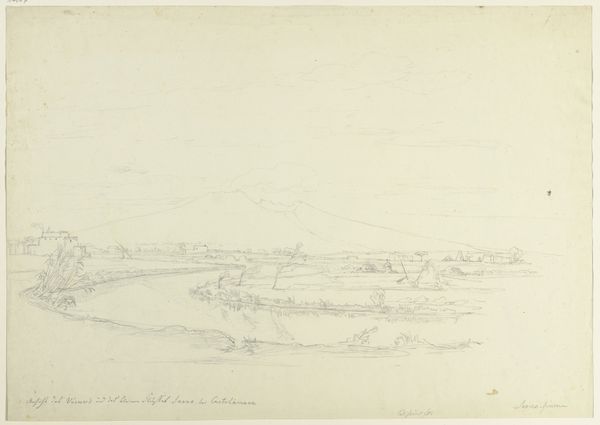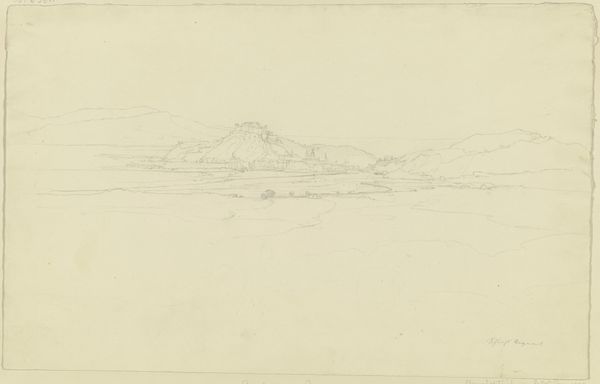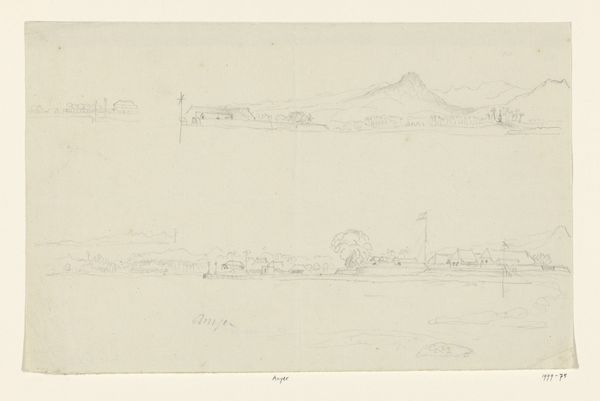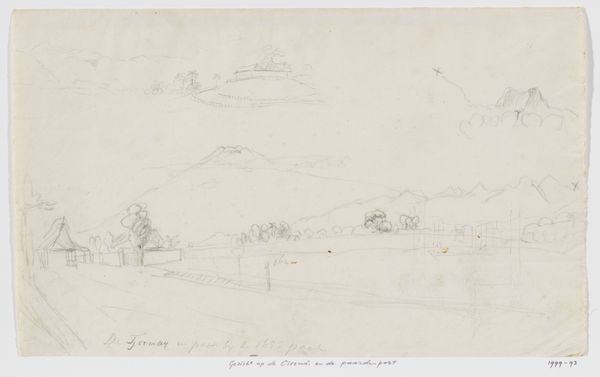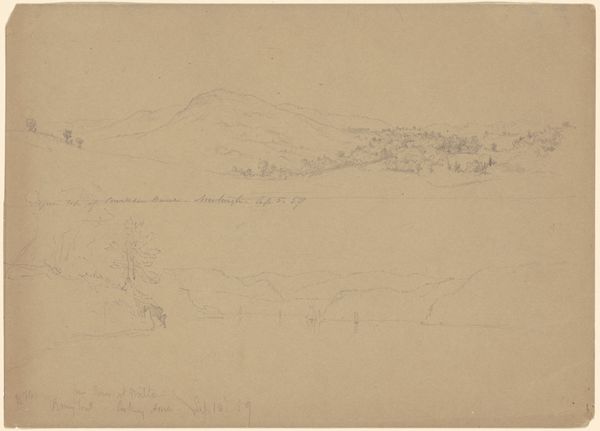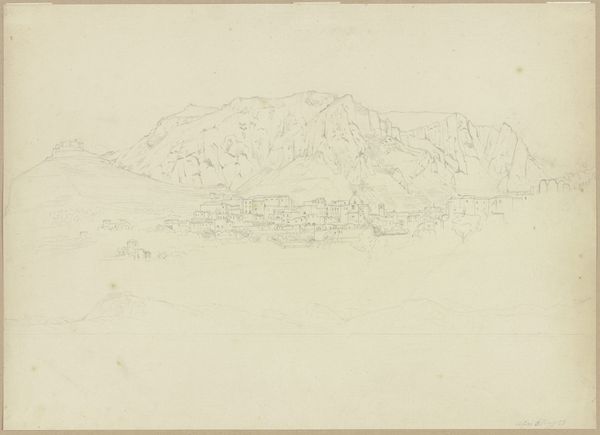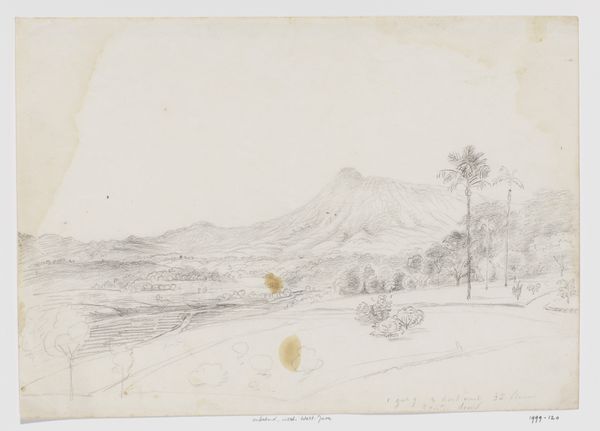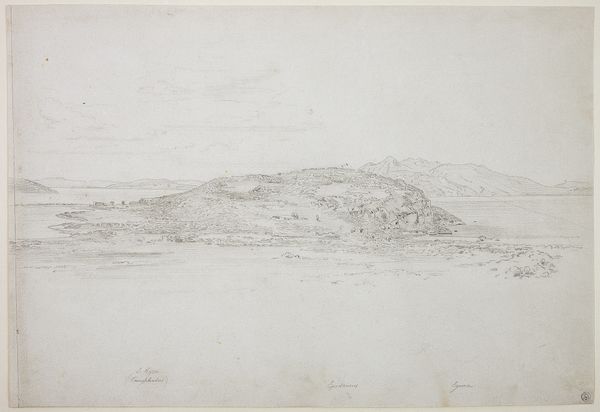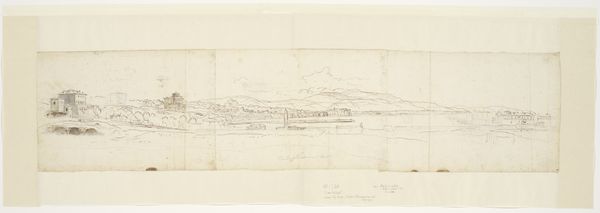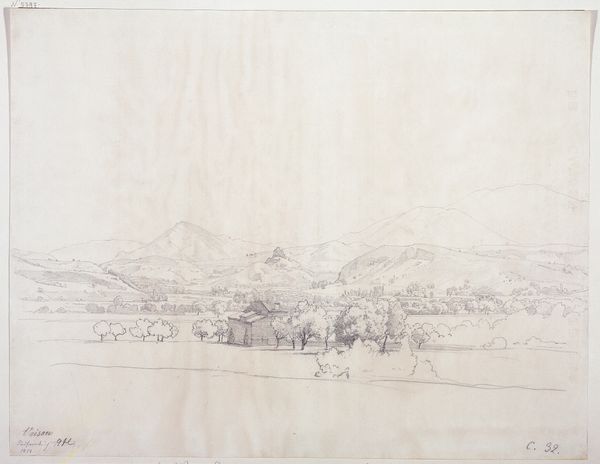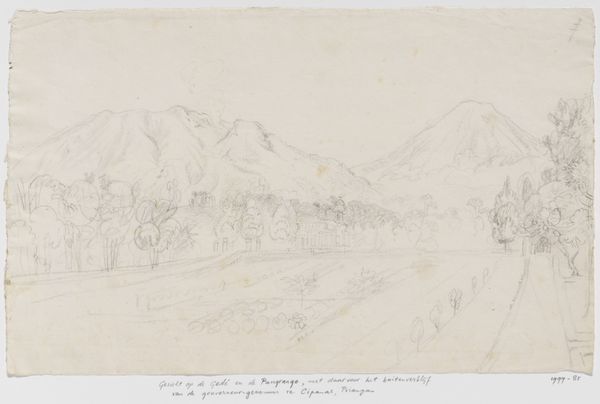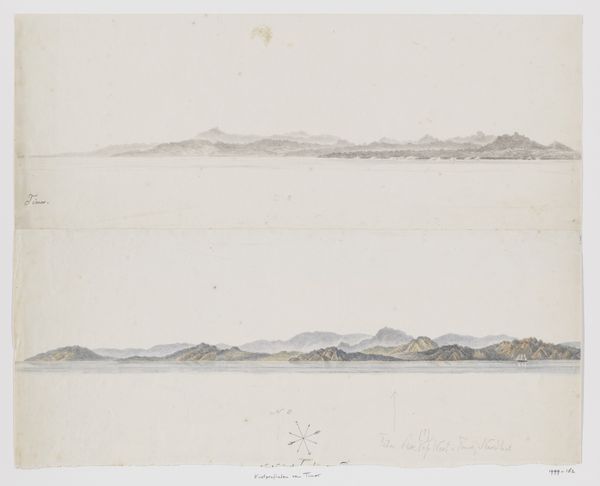
#
amateur sketch
#
ink painting
#
pencil sketch
#
incomplete sketchy
#
etching
#
possibly oil pastel
#
ink drawing experimentation
#
watercolour illustration
#
mixed medium
#
watercolor
Dimensions: height 258 mm, width 332 mm
Copyright: Rijks Museum: Open Domain
Curator: We're looking at "Gezicht op dorp en berglandschap, Java," or "View of a Village and Mountainous Landscape, Java" by Adrianus Johannes Bik, dating from around 1816 to 1846. Editor: It’s a muted piece, almost ghostly. The composition seems simple at first glance—horizontal bands creating recession from a low-lying foreground up to the mountainous background. It exudes an air of tranquility but also feels unfinished, vulnerable almost. Curator: Indeed, it is largely defined by that horizontal structuring. Observe how the delicate pencil work renders depth, with a clear delineation between the planes: the land and then mountains in the background. Notice the interplay between light and shadow across those peaks. Editor: The mountain range is striking. Mountains often symbolize stability and permanence, but here they are almost sketched in, which seems more transient. The village, huddled beneath them, what might that symbolize, especially in contrast to the raw energy suggested by those volcanoes? Is there perhaps, some suggestion about protection and providence or anxiety and foreboding for the settlers? Curator: It's fascinating how you read the mountains symbolically. Focusing on the structure again, I find it interesting how the artist creates visual rhythm. He employs subtle shifts in tonal values of greyscale to create atmospheric depth. Also, the linear progression, though simplified, adheres to established academic landscape principles of the time. Editor: Looking closer, there are multiple styles being represented here—a very tentative touch, unfinished etching. And perhaps even watercolor application in certain sections of this mixed-medium drawing. Was the artist perhaps struggling between formal realism, and, perhaps more subjective feelings? Curator: Perhaps. Ultimately, Bik uses simplification to convey a sense of place. I find the subdued tonality key here. The absence of dramatic contrasts flattens the landscape and almost subdues the overall scene in the pencil tones. Editor: I agree. It’s not a glorious vision, but a quiet contemplation on nature, human presence, the ever-shifting moods, perhaps a bit wistful for us who may observe colonial rule and its uneasy relation to those powerful geologic underpinnings that seem destined to endure forever. Curator: Precisely. It offers, if not answers, than interesting prompts for further analysis and discussion when regarding landscape art of the colonial period in the east.
Comments
No comments
Be the first to comment and join the conversation on the ultimate creative platform.
